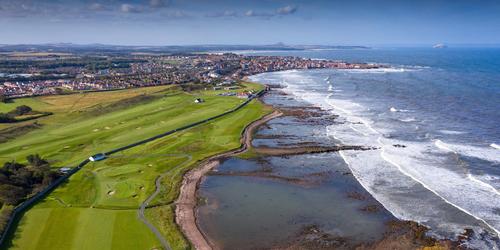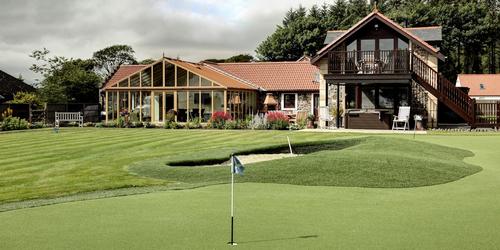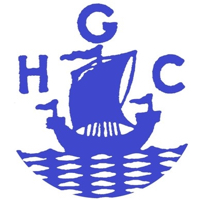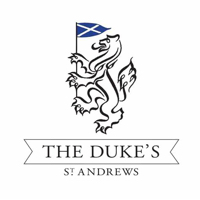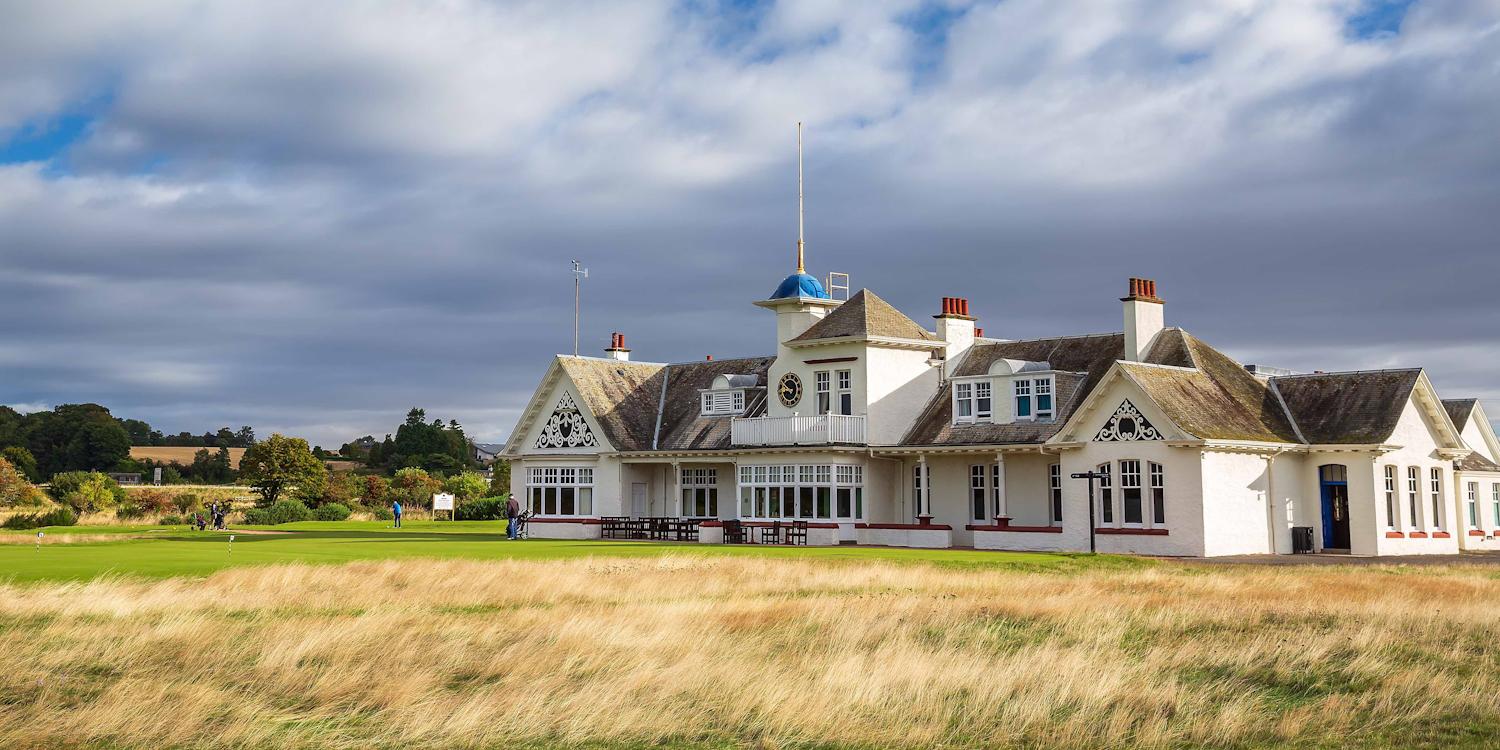
Experience Panmure Golf Club on Your Next Scotland Golf Trip
Walk in the steps of legendary Ben Hogan where he prepared for the 1953 Open
By Brian Weis
Ben Hogan only played in one Open Championship, but he left an indelible mark on Scotland's east coast because of how he won the game's oldest major and how he prepared for it.
The Hawk famously captured the 1953 Open at Carnoustie Golf Links by shooting a final-round 68 while battling the flu. He topped four men by four shots in his lone voyage to Scotland, which came four years after an automobile accident that nearly killed him.
That journey, however, began two weeks earlier when Hogan, accompanied only by his caddy, Cecil Timms, arrived at Panmure Golf Club to acclimatise to the terrain of links golf and to acquaint himself with the smaller 1.62 inch British ball that was used at the time.
Ben Hogan was the only participant in the Open given the privilege of playing at Panmure Golf Club. Panmure, at that time, was an extremely private Club and Hogan was able to practice away from the prying eyes of the public and the press.
Legend has it that Hogan studied Macdonald Smith's swing intently to improve his own. Macdonald Smith and his family started life in Barry, Carnoustie, before emigrating to America in 1908. Smith is widely regarded as one of the best players of all time who never won a major championship. When he returned to Panmure in 1931 to qualify for the first Open Championship at Carnoustie, Smith set a new course record of 70.
Panmure is a historic Scottish club, only 1.5 miles from Carnoustie Golf Links and a 45-minute drive from St. Andrews. It was founded in 1845 by a collection of 17 gentlemen and the Club's name and shell logo come from the close connection with the Maule Ramsay family. The Rt. Hon Earl of Dalhousie remains the Club's honorary president and King George VI accepted honorary membership of the Club in 1930.
Panmure is the world's 21st oldest golf club and moved to its current site in Barry in 1899. The original layout was designed by Old Tom Morris and constructed by R. Duff of Edinburgh, who also built the New course at St Andrews and Muirfield. Many of the original holes remain.
Five-time Open champion James Braid gave suggestions for modifications in the 1920s and those were among the most significant changes over the past century.
Some of the charming characteristics include holes designed by these greats. Braid's par-3, 180-yard 9th hole, with its undulating green protected by large bunkers and dunes and Old Tom's par-4, 396-yard 12th hole which requires an accurate approach shot to carry the Buddon Burn guarding the front of the green.
Today the course measures 6,551 yards, plays to a par 70, and combines the best elements of links and heathland, with tight fairways, challenging carries and undulating greens. True to links golf, holes mostly play firm and fast and the rolling fairways wind through dunes and pine trees, leading to greens that are protected by proper Scottish bunkers.
Hogan would never play in the Open again, but his legacy at Panmure remains. The sixth hole, a 414-yard par 4, stroke index 1, was Hogan's favourite hole and is named after the great man. He suggested to the club that a strategically placed pot bunker should be built to the front and right of the green. It was and it is still known as Hogan's bunker.
The other legendary story from Hogan's Panmure experience came on the par-4, 401-yard 17th hole. Hogan liked the green and spent much time putting there but he wanted it to run quicker than it did. So, he asked William Falconer, the head greenkeeper, if the mower could shave the green a tad tighter. Falconer said it was possible, but pointed to the mower and mentioned that Hogan was free to do it himself. He did, and word is that he later returned the mower to Falconer in pristine condition after insisting on cleaning it first.
Panmure has hosted many prestigious championships over the years ranging from national amateur tournaments to final qualifying for The Open Championship. Recently, the club has hosted regional qualifying for The Open, the R&A Girls Amateur Championship, final qualifying for the AIG Women's Open and the stroke play qualifying for the R&A Boys Amateur Championship.
The colorfully clad Doug Sanders advanced through qualifying at Panmure in 1970 and later lost to Jack Nicklaus in an 18-hole playoff with a chance to win the claret jug. Nicklaus shot even-par 72 to clip Sanders by one and earn his second of three Opens. Gary Player, Nick Faldo, Sandy Lyle and Padraig Harrington are a few Open champions who have played at Panmure over the years.
The Club's iconic clubhouse is one of the finest old golf buildings in Scotland and was modelled, both architecturally and spiritually on Royal Calcultta Golf Club. It offers three uniquely charming lounges, perfect for a post round beverage.
Hogan never returned to Scotland, and the victory at Carnoustie marked the last major that he'd ever win. The Scots still refer to him as the "Wee Ice Mon" because of his steely demeanor, determination, and ability to perform best under pressure. The Open victory, combined with his presence at Panmure the preceding weeks, were enough for Hogan to remain a legend in the area forever.
Panmure remains a private member's club, but they are delighted to welcome visitors to experience their authentic, classic links. Are you ready to take on the Hogan challenge?
Visit https://www.panmuregolfclub.co.uk.
More Information »
Revised: 07/18/2023 - Article Viewed 5,232 Times
- View Course Profile
About: Brian Weis
![]() Brian Weis is the mastermind behind GolfTrips.com, a vast network of golf travel and directory sites covering everything from the rolling fairways of Wisconsin to the sunbaked desert layouts of Arizona. If there’s a golf destination worth visiting, chances are, Brian has written about it, played it, or at the very least, found a way to justify a "business trip" there.
Brian Weis is the mastermind behind GolfTrips.com, a vast network of golf travel and directory sites covering everything from the rolling fairways of Wisconsin to the sunbaked desert layouts of Arizona. If there’s a golf destination worth visiting, chances are, Brian has written about it, played it, or at the very least, found a way to justify a "business trip" there.
As a card-carrying member of the Golf Writers Association of America (GWAA), International Network of Golf (ING), Golf Travel Writers of America (GTWA), International Golf Travel Writers Association (IGTWA), and The Society of Hickory Golfers (SoHG), Brian has the credentials to prove that talking about golf is his full-time job. In 2016, his peers even handed him The Shaheen Cup, a prestigious award in golf travel writing—essentially the Masters green jacket for guys who don’t hit the range but still know where the best 19th holes are.
Brian’s love for golf goes way back. As a kid, he competed in junior and high school golf, only to realize that his dreams of a college golf scholarship had about the same odds as a 30-handicap making a hole-in-one. Instead, he took the more practical route—working on the West Bend Country Club grounds crew to fund his University of Wisconsin education. Little did he know that mowing greens and fixing divots would one day lead to a career writing about the best courses on the planet.
In 2004, Brian turned his golf passion into a business, launching GolfWisconsin.com. Three years later, he expanded his vision, and GolfTrips.com was born—a one-stop shop for golf travel junkies looking for their next tee time. Today, his empire spans all 50 states, and 20+ international destinations.
On the course, Brian is a weekend warrior who oscillates between a 5 and 9 handicap, depending on how much he's been traveling (or how generous he’s feeling with his scorecard). His signature move" A high, soft fade that his playing partners affectionately (or not-so-affectionately) call "The Weis Slice." But when he catches one clean, his 300+ yard drives remind everyone that while he may write about golf for a living, he can still send a ball into the next zip code with the best of them.
Whether he’s hunting down the best public courses, digging up hidden gems, or simply outdriving his buddies, Brian Weis is living proof that golf is more than a game—it’s a way of life.
Follow Brian Weis:
Contact Brian Weis:
GolfTrips.com - Publisher and Golf Traveler
262-255-7600









